Costa Rica Holidays: Our Ultimate Guide
Zipline over cloud rainforests, go sloth spotting, enjoy surfing, scuba diving and snorkelling (in either the Pacific or the Caribbean), or simply have a soak in a geothermal pool overlooking an active volcano. Costa Rica is simply a dream come true if you love wildlife and the outdoors. Here’s all you need to know about visiting this unique Central American country.
Costa Rica: A holiday destination like no other
With a population of just over 5 million, Costa Rica is a small nation, yet its huge variety of microclimates, ecosystems and wildlife make it feel much bigger.
Inland, you'll see many species of monkeys, birds, and iguanas, not to mention sloths, for whom many sanctuaries have been established.
Indeed, Costa Rica's successful efforts to preserve the sloth population are indicative of its entire approach to the environment: few Central and South American countries have such an impressive record in protecting indigenous wildlife and habitats.
On the coast, meanwhile, you'll find some of the finest beaches in Central America, on both the Pacific and Caribbean sides.
The well-protected coast is also home to leatherback, loggerhead and hawksbill turtles, seven species of ray, more than five species of shark and hundreds of species of tropical fish. This makes the coast a hot spot for scuba divers and snorkelers.
Surfers aren’t left out either: many beaches have excellent conditions for catching a wave or two.
Then there's the cosmopolitan capital, San Jose, with stunning architecture such as the Teatro Nacional and all the trappings of a modern city.
What to do in Costa Rica?
As you’ve probably gathered, there’s lots to do in Costa Rica. But for all the ins and outs, read our ultimate guide to making the most of a Costa Rica holiday - starting with destinations on the Pacific side, before moving to hotspots on the Caribbean coast.
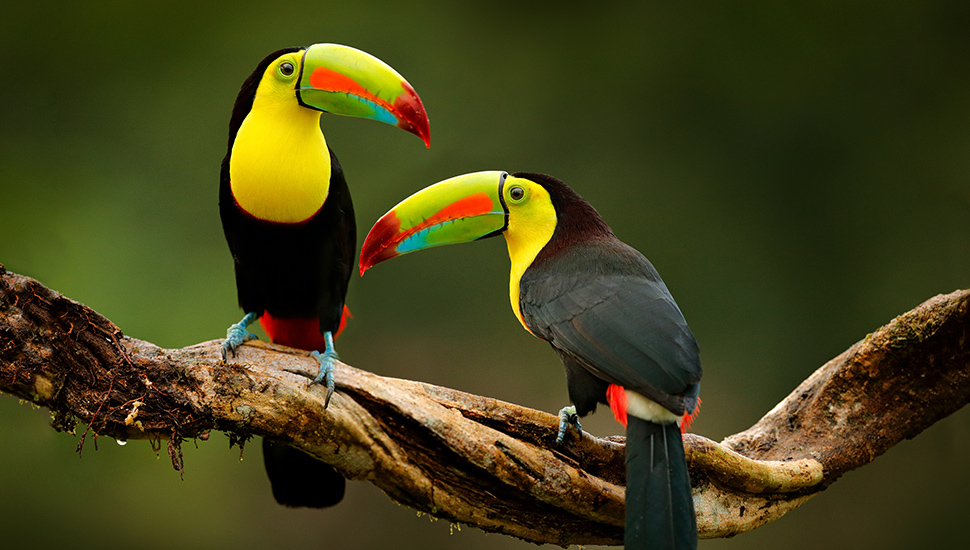
Costa Rica vacation information: Quick FAQs
How long will it take to explore Costa Rica?
If you plan to see both the Pacific and Caribbean sides of Costa Rica, you'll need at least two weeks. However, this won't give you much time to relax, so it’s better to pencil in three or four weeks if possible.
Alternatively, if you only have two weeks for your Costa Rica holiday, you might decide to explore just one side of the country and return later to see more.
When is the best time to visit Costa Rica?
For the driest and brightest weather, aim to visit between December and April.
However, with so many microclimates, the best time to visit depends on what you want to see. For example, July to October is the loggerhead turtle nesting season.
Is Costa Rica expensive?
In comparison to other Central American countries such as Nicaragua or El Salvador, Costa Rica is on the more costly side. However for Brits, it compares well to holidays within northern Europe.
For mid-range and upmarket hotels, you can expect prices comparable to the UK, but there are cheaper options: rooms in guest houses, hostel beds and camping options can be found for around £25.
And while supermarket prices are similar to the UK, eating out is noticeably cheaper.
Entry to key attractions wouldn't be described as cheap. For example, the treetop walkways of Sevultura cost $49 (£31) + taxes, with similar prices for the park's other attractions. There are more modest fees for entering national parks and nature reserves - but these can quickly mount up.
Should I rent a car in Costa Rica?
The cheapest way to get around Costa Rica is by bus: the country operates a network of affordable buses. However, for maximum freedom, consider renting a car. Note however that some of Costa Rica’s roads are quite rough, in which case an all-terrain vehicle might be a better option in some areas.
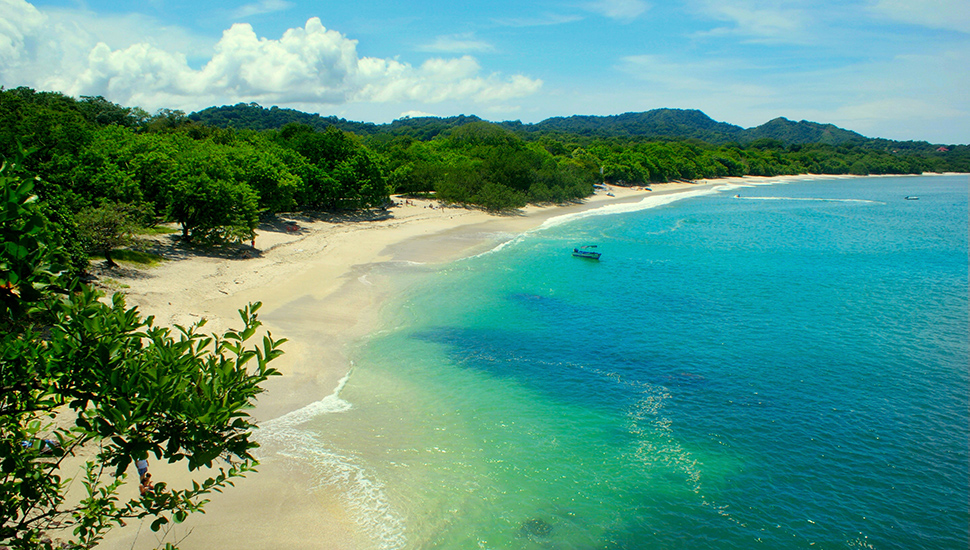
Pacific Side of Costa Rica
Guanacaste
Located in the country's northwest, next to the Nicaraguan border, Guanacaste is home to many high-end resorts, the most famous of which is Planet Hollywood, alongside leading hotel names like the Four Seasons and the Hyatt.
Planet Hollywood
Many resorts offer all-inclusive packages, which offer good value for money. Food, drinks, and entertainment are generally included.
At Planet Hollywood, you can join a silent disco, where you wear a pair of headphones and dance around; to the casual onlooker, it appears as if people are just dancing silently! Silent discos are more than just a gimmick - they allow guests to enjoy loud music without disturbing other residents.
There are many daytime beach parties to enjoy near Planet Hollywood too.
Beaches of Guanacaste
Guanacaste is home to many top-notch beaches, including Playa del Coco and Las Catalinas. These sandy stretches are very pretty, but don’t feature the white sands found on the Caribbean side of Costa Rica. Nevertheless, this is one of the most popular regions for a Costa Rica holiday.
Tamarindo
Tamarindo is another well-developed beach spot, especially popular among Americans and other non-Costa Ricans.
Island-hopping cruises and sunset boat trips are among the many beach-related activities you can try in Tamarindo. It’s also probably the best place for surfing lessons in the country.
Nosara
If you’re seeking unspoilt beaches, Nosara is a rewarding choice. It’s generally accepted that Nosara is what Tamarindo was like 10 to 15 years ago, with very few resort hotels and relatively unpeopled stretches of sand.
Nosara is about an hour south of Tamarindo and can be tricky to reach, but for those seeking beach solitude, it’s worth the effort.
Samara
Samara, south of Nosara, has more going on than the latter but is more laid-back and undeveloped than Tamarindo.
Note that roads can be rough in places.
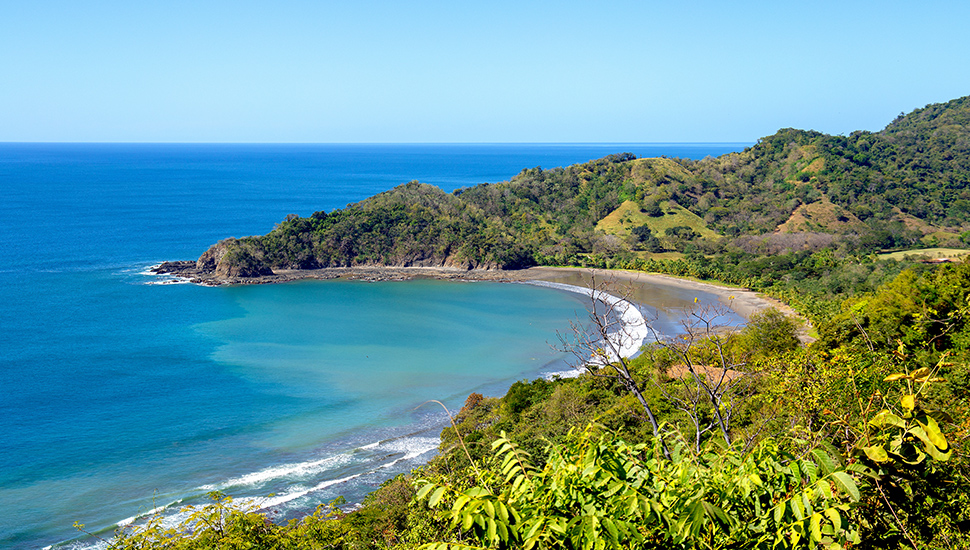
Playa Islita
Further south, you’ll come to Playa Islita, which is home to a unique Marriott hotel overlooking the jungle.
Sightings of howler monkeys and wild parrots are virtually guaranteed.
Santa Teresa
Another stretch of coast beloved by holidaymakers is Santa Teresa, with more excellent beaches. As well as boasting great surf conditions, it’s perfect for sunset drinks.
The area’s outdoor lifestyle seems to benefit the health of the locals; nearby Nicoya is one of only five Blue Zones in the world —where people are most likely to reach 100 or more!
Santa Teresa has a distinctly bohemian vibe and has become a mecca for Europeans looking for an alternative beach lifestyle.
Note that there are many dirt roads around Santa Teresa, so consider renting an all-terrain 'side-by-side' vehicle, which is better able to handle the conditions than a regular rental car.
Montezuma
On the other side of the peninsula lies Montezuma, even less developed than Santa Teresa. What it lacks in infrastructure, it more than makes up for with its remote vibe.
Sunset baby turtle releases also take place here.
From Montezuma, you can also take boat trips to the stunning Tortuga Island - arguably the most beautiful island in Costa Rica.
Cabo Blanco National Park
Head to the peninsula’s southern tip for hikes around the Cabo Blanco National Park, where you can see more howler monkeys in their natural habitat.
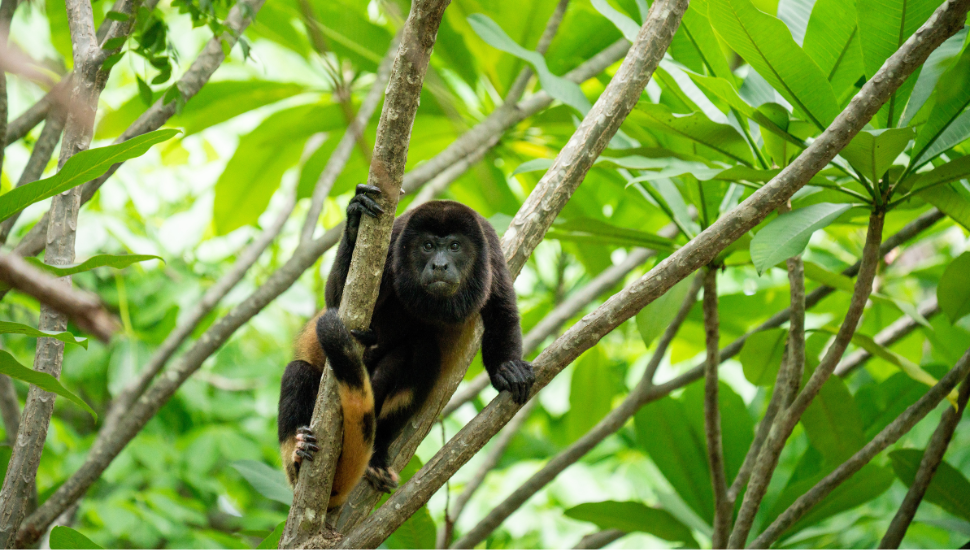
Monteverde - region
More fabulous beaches and jungle treks await in the region south and east of Guanacaste.
Mirador
Head to Monteverde’s lofty Mirador and enjoy fabulous views over the Colorado Gulf and the Gulf of Nicoya.
Mirador can be gusty but is much cooler due to its high elevation.
Night-time jungle safaris
Night walks are popular in the Monteverde region. These cost around $30 per person and give you a great chance of seeing the possum-like kinkajou, as well as toucans, snakes, tarantulas and frogs.
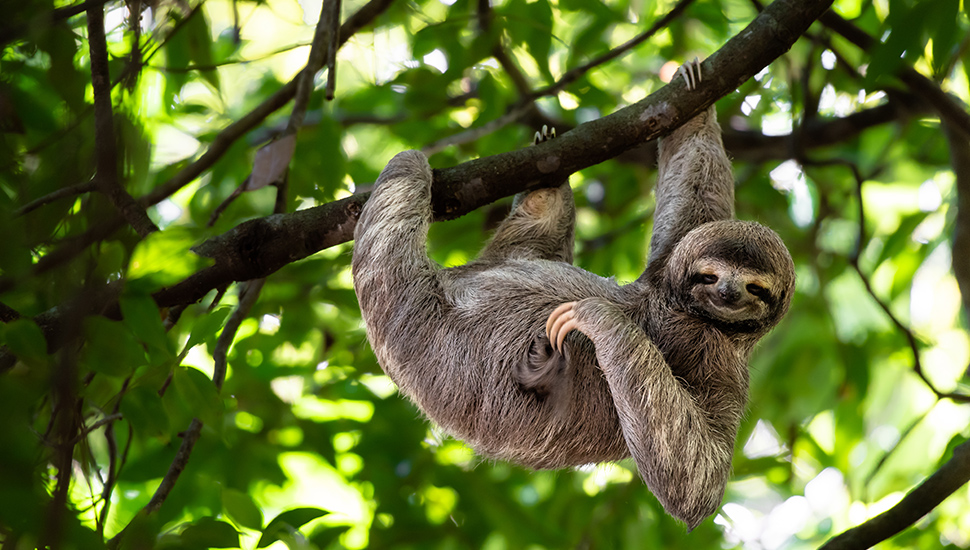
Selvatura Park / Cloud Forest
One of Monteverde’s top attractions, Selvatura Park is famed for its canopy zip line ride, which lets you glide over the cloud rainforest (characterised by low-lying clouds). The park also boasts treetop suspension bridges, a butterfly garden, a sloth habitat and natural history walks.
Interestingly, while the park does have butterfly cocoons, they are not legally permitted to hatch them; all the butterflies are brought in from outside. This relates to laws intended to curb the illegal export of animals and insects, some of which can fetch high prices abroad.
Selvatura’s sloth population, meanwhile, is composed entirely of animals that have been injured and therefore cannot survive in the wild.
La Fortuna
Gateway to the Arenal Volcano National Park, La Fortuna is famed for its hot thermal springs. Some of these are found inside hotel resorts, while others can be visited for a fee.
White-water rafting and canoeing are also popular pursuits in La Fortuna. There’s also a chocolate farm, and more sloth sanctuaries.
Another popular activity is hiking up to Arenal Volcano, an active andesitic stratovolcano located about 90 km northwest of the capital San Jose.
Note that from La Fortuna, you can reach both San Jose and Liberia airport in around 3 hours, making it a great place to start or end your visit to this region, depending on your plans.
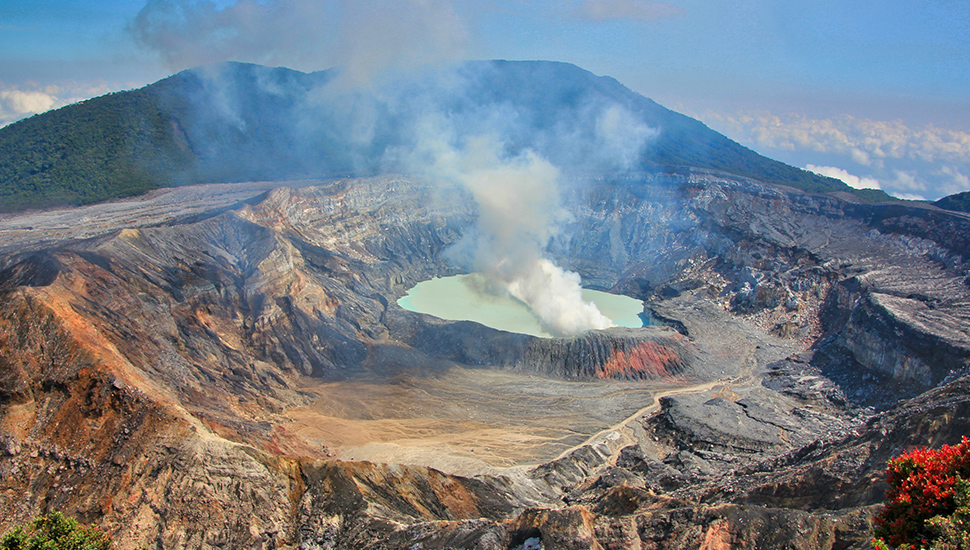
Poas Volcano
If you’re heading to San Jose from La Fortuna, consider stopping at Poas Volcano—but be sure to make a reservation ahead of time. On the way to San Jose, you’ll cross a ridge that offers superb views over the San Jose valley.
San Jose
The sprawling Costa Rican capital offers all the amenities of a modern city. If you’re driving a rental car, you’ll find the busy roads much more difficult to navigate than when motoring in the countryside.
The wider metropolitan area of San Jose is home to some 2.5 million people - about half the country's population.
While in San Jose, be sure to take a guided tour around the stunning Teatro Nacional, with its impressive neoclassical façade.
Jaco
Jaco (pronounced 'hako') is southwest of San Jose and is considered a party town. Many visitors stay here for the duration of their holiday in Costa Rica.
There are lots of wildlife activities here, including crocodile tours.
Manuel Antonio
South of Jaco is Manuel Antonio, considered the premier place for wildlife spotting in Costa Rica.
If you have a soft spot for sloths, then this is the best area to see them in the wild. Several types of monkey also call Manuel Antonio home.
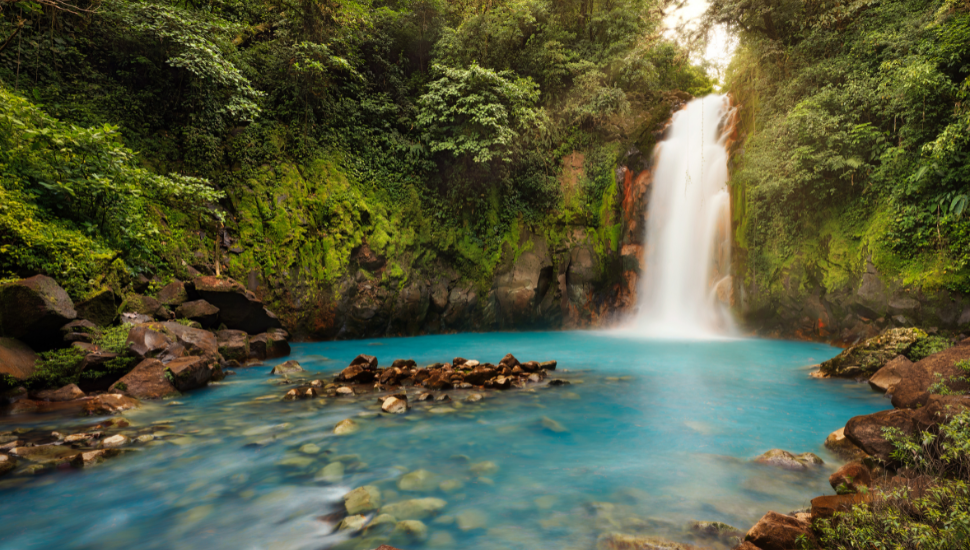
Uvita
In Uvita, you’ll find Parque Nacional Marino Ballena, famed for its huge whale-tail-shaped coastal feature. As it turns out, many whales do visit this region.
The hinterland of Uvita is where you’ll find some of Costa Rica’s most beautiful waterfalls.

Caribbean side of Costa Rica
Tortuguero National Park
Covering 47,000 acres, Tortuguero is arguably the top attraction on Costa Rica’s Caribbean coast. It is home to 111 species of reptiles, 300 kinds of birds and four species of sea turtle.
While hiking through the park is popular, perhaps the most rewarding way to explore this stunning area is via the vast network of waterways. Motorboats, canoes and kayaks are all great options.
The park also has its fair share of zip-lines and suspension bridges, like Puntarenas on the other side of the country.
Best times to visit Tortuguero?
- General: February to April & November (driest months)
- March to May: Leatherback turtle nesting season
- July to October: Loggerhead turtle nesting season
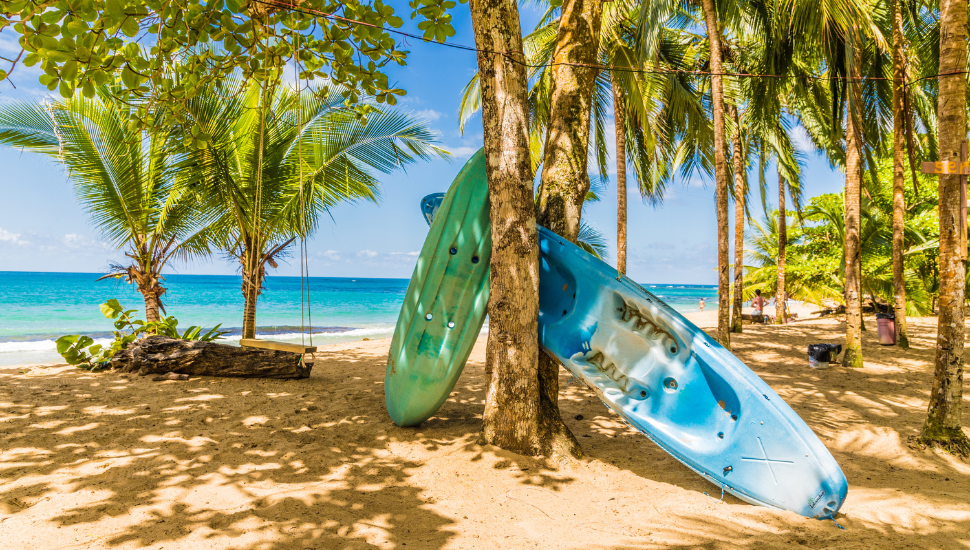
Puerto Viejo
This stunning seaside hamlet is perfect for budget travellers seeking Caribbean charm without breaking the bank. This backpacker haven offers a cultural blend of Afro-Caribbean, Bribri Indian and Tico, not to mention a Western hippy influence.
Playa Cocles is popular with surfers who love the Salsa Brava wave that breaks over the shallow coral reef (December–April; June/July). The reef also makes for spectacular snorkelling.
Avoid the rainy season by visiting Puerto Viejo from February to April and August to October.
Manzanillo
Located 20 minutes from Puerto Viejo, Manzanillo is a mecca for scuba divers and snorkelers, thanks to the amazing coral reef system located just offshore.
There are also excellent hiking routes, where you’re likely to see white-faced capuchin monkeys, howler monkeys, sloths and iguanas, among much else.
Get a Quote